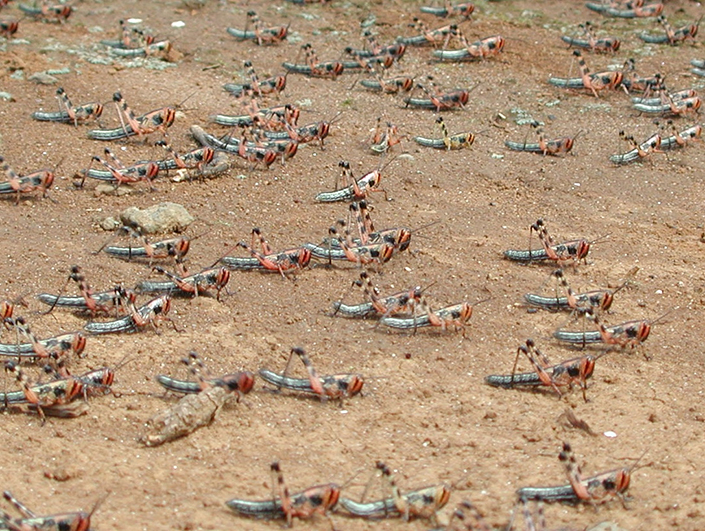How does a plague of locusts begin? Researchers are looking for triggers

Image: Texas A&M AgriLife
Throughout history, humans have suffered from the devastation caused by locust swarms of biblical proportions. A Texas A&M University entomologist is trying to pinpoint the cause that triggers the insects’ swarming behavior.
The entomologist, Hojun Song, published his work in the June 30 edition of Research Features. Song is an associate professor in the Department of Entomology.
“Locust swarms are a severe threat to agriculture and food security,” Song said. “Our research focuses on understanding how and why locust swarms occur, which is crucial if we are to develop effective control methods.”
Desert locusts found in Africa and the Middle East are among the major culprits to widespread famine in their native lands due to the speed in which they can mobilize and travel great distances and because of their sheer numbers while doing so.
Song said a large locust plague can fit 150 million insects in an area less than an acre. That many locusts can eat as much as 10 elephants or 2,500 people in a single day.
Desert locusts affect an estimated 20 percent of the world, Song writes in his article.
When populations of desert locusts increase, the insects can change their physical appearance and behavior, a phenomenon called locust phase polyphenism. Bad things start to happen quickly when that occurs, he said. “When populations are low, desert locusts are bright green and are repelled by each other; but when populations increase, at a certain point they become attracted to each other and form large mobile units or swarms. The individuals start to grow, and their metabolic rate increases all the while developing conspicuous coloration.”
In laboratory rearing experiments involving a number of species in both isolation and crowded studies, Song and his students made some observations as the various species numbers grew and populations became crowded.
While much is known about the desert locust through years of research, it’s not clear if that research can be directly applied to other swarming locust species. So Song and his team developed another model system to understand the locust phase polyphenism on a molecular level on another serious locust pest species.
He and his team visited Yucatan, Mexico, in 2015 to collect the Central American locust S. piceifrons, one of the most damaging insect pests in Mexico and Central America. And even though it swarms almost annually, not much is known about its behavior.
Through his studies of captive populations of the Central American locust, Song and his team of students learned that many genes important for metabolism, the immune system and cellular processes associated with the phase change appear to be very different in the Central American locust in comparison with their closely related non-swarming brethren.

